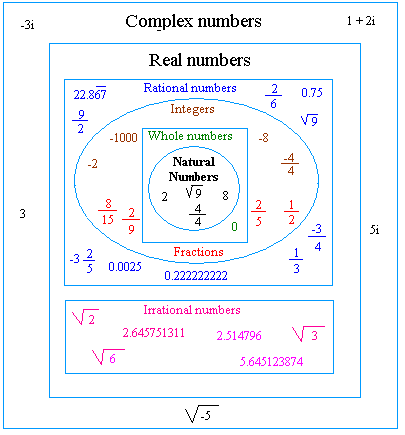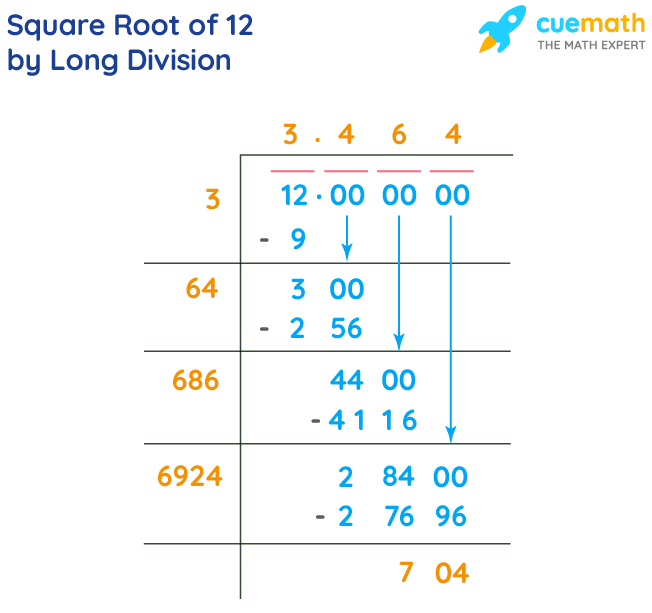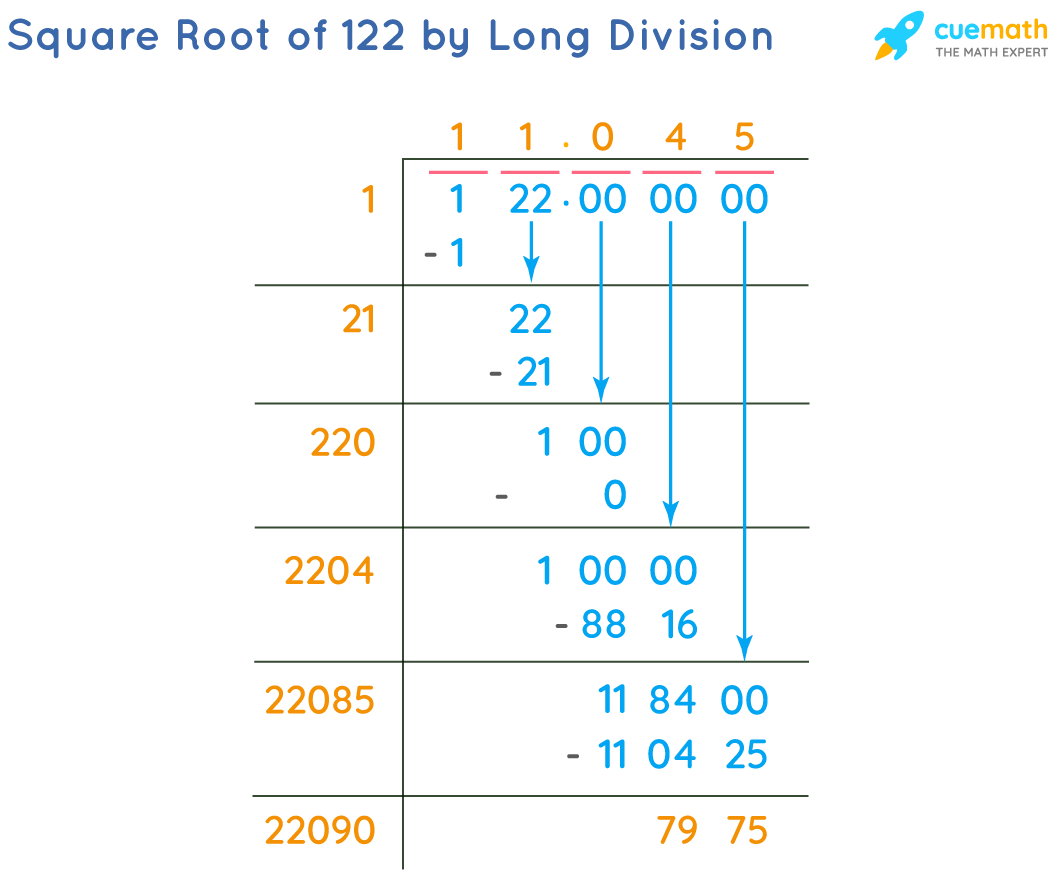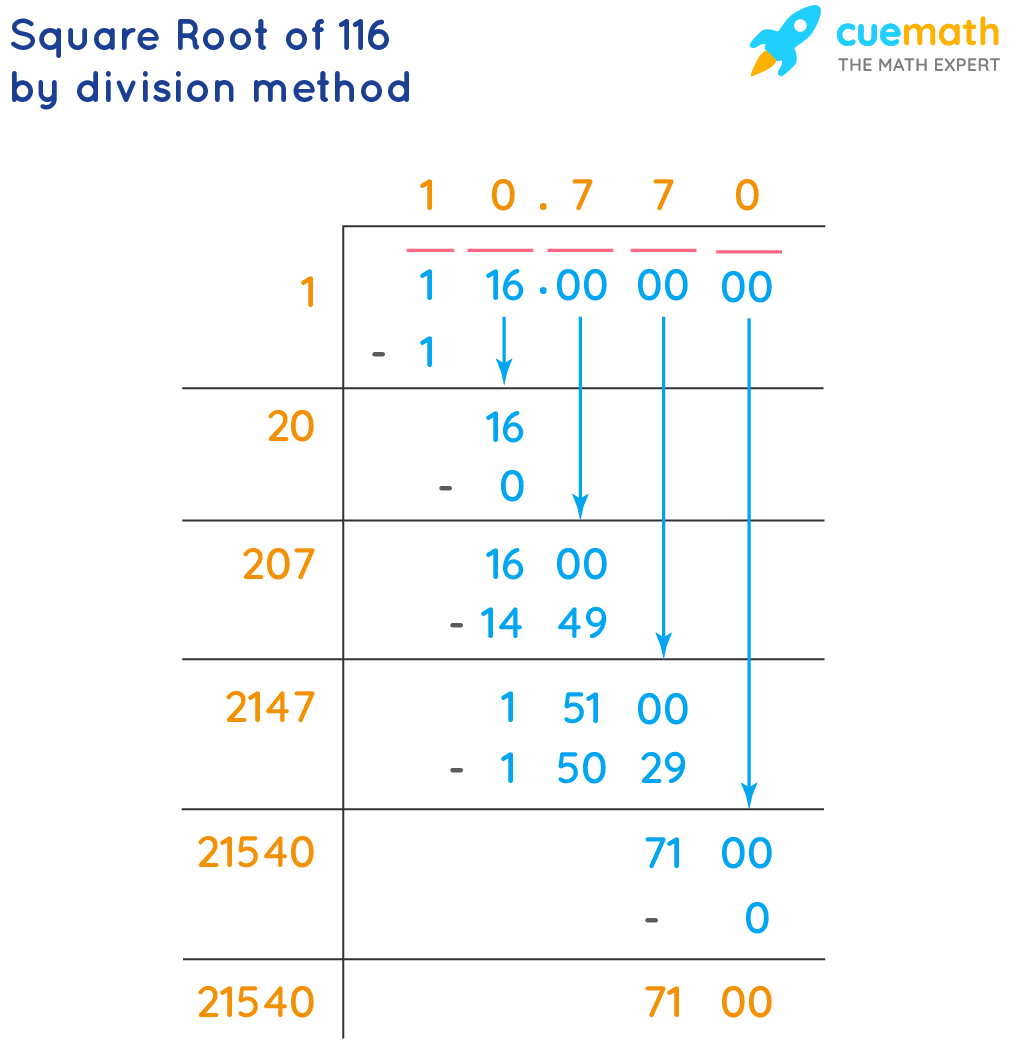Topic is the square root of 12 a rational number: Understanding whether the square root of 12 is a rational number is crucial for math enthusiasts and students. In this article, we explore the nature of square roots, the distinction between rational and irrational numbers, and why the square root of 12 falls into the category of irrational numbers. Join us in this enlightening mathematical journey.
Table of Content
- Is the Square Root of 12 a Rational Number?
- Understanding Rational and Irrational Numbers
- What is a Rational Number?
- What is an Irrational Number?
- Why the Square Root of 12 is Irrational
- Mathematical Explanation and Examples
- Simplifying the Square Root of 12
- Decimal Representation of the Square Root of 12
- Common Misconceptions
- Applications of the Square Root of 12
- Frequently Asked Questions
- YOUTUBE:
Is the Square Root of 12 a Rational Number?
The square root of 12 is an irrational number. To understand why, we need to delve into the concepts of rational and irrational numbers.
Rational vs. Irrational Numbers
A rational number is any number that can be expressed as the quotient or fraction of two integers, where the denominator is not zero. Examples include numbers like 1/2, 3, and 4.5.
An irrational number cannot be written as a simple fraction. Irrational numbers have non-repeating, non-terminating decimal expansions. Classic examples include √2, π, and e.
Square Root of 12
The square root of 12 is denoted as √12. It can be simplified to 2√3, which approximately equals 3.46410161514...
- √12 cannot be expressed as a fraction of two integers.
- Its decimal representation is non-terminating and non-repeating.
Thus, the square root of 12 is an irrational number.
Prime Factorization Method
To further illustrate why √12 is irrational, consider its prime factorization:
- 12 = 2² × 3
- √12 = √(2² × 3) = 2√3
Since 3 is not a perfect square, √12 remains an irrational number.
Conclusion
Given the properties and the mathematical definition, it is clear that the square root of 12 is an irrational number.

READ MORE:
Understanding Rational and Irrational Numbers
Rational and irrational numbers are fundamental concepts in mathematics, each with distinct properties and roles. Understanding these numbers helps in grasping various mathematical principles and solving numerous problems.
Rational Numbers
A rational number is any number that can be expressed as the quotient or fraction \( \frac{p}{q} \), where \( p \) and \( q \) are integers, and \( q \) is not zero.
- Examples of rational numbers: \( \frac{1}{2} \), \( 3 \) (which can be written as \( \frac{3}{1} \)), \( -4.75 \) (which is \( -\frac{19}{4} \)).
- Rational numbers include integers, finite decimals, and repeating decimals.
Irrational Numbers
An irrational number cannot be expressed as a simple fraction; its decimal form is non-repeating and non-terminating.
- Examples of irrational numbers: \( \pi \), \( \sqrt{2} \), and the golden ratio \( \phi \).
- Irrational numbers cannot be written as \( \frac{p}{q} \), where both \( p \) and \( q \) are integers.
Classification of the Square Root of 12
The square root of 12, written as \( \sqrt{12} \) or \( 2\sqrt{3} \), is an example of an irrational number because it cannot be expressed as a ratio of two integers.
What is a Rational Number?
A rational number is any number that can be expressed as a ratio of two integers, where the denominator is not zero. In mathematical terms, a rational number is a number that can be written in the form \(\frac{p}{q}\), where \(p\) and \(q\) are integers and \(q \neq 0\).
Here are some key characteristics of rational numbers:
- They can be positive, negative, or zero.
- All integers are rational numbers because any integer \(n\) can be written as \(\frac{n}{1}\).
- They include fractions like \(\frac{1}{2}\), \(\frac{-3}{4}\), and \(\frac{22}{7}\).
- They can be represented as either terminating decimals (e.g., 0.75) or repeating decimals (e.g., 0.333...).
Examples of rational numbers include:
- \(3 = \frac{3}{1}\)
- \(0 = \frac{0}{1}\)
- \(0.75 = \frac{3}{4}\)
- \(0.333\ldots = \frac{1}{3}\)
In contrast, numbers that cannot be expressed as a ratio of two integers are called irrational numbers. These include non-terminating, non-repeating decimals like \(\sqrt{2}\), \(\pi\), and \(e\).
What is an Irrational Number?
An irrational number is a real number that cannot be expressed as a ratio of two integers. This means that an irrational number cannot be written in the form \( \frac{a}{b} \) where \( a \) and \( b \) are integers and \( b \) is not zero.
Irrational numbers have non-terminating, non-repeating decimal expansions. Unlike rational numbers, their decimal form continues infinitely without repeating any pattern. Some of the most well-known examples of irrational numbers include \( \pi \) (pi) and \( e \) (Euler's number).
Here are some key properties of irrational numbers:
- They cannot be written as simple fractions.
- Their decimal expansions are infinite and non-repeating.
- They include many square roots of non-perfect squares, such as \( \sqrt{2} \), \( \sqrt{3} \), and \( \sqrt{12} \).
To illustrate, consider \( \sqrt{12} \). It can be approximately calculated as 3.4641016151377544... Since this decimal goes on forever without repeating, \( \sqrt{12} \) is classified as an irrational number.
Another famous example is \( \pi \), which is approximately 3.141592653589793... Despite being commonly approximated as 3.14, the true value of \( \pi \) extends infinitely without repeating, affirming its irrationality.
The distinction between rational and irrational numbers is fundamental in number theory and helps in understanding the real number system. Identifying whether a number is rational or irrational is crucial in various mathematical analyses and applications.
Why the Square Root of 12 is Irrational
The square root of 12 is classified as an irrational number. An irrational number is one that cannot be expressed as a simple fraction, meaning its decimal form is non-terminating and non-repeating. Let's explore why this is the case for the square root of 12.
To understand this, we can break down the number 12 into its prime factors:
- Prime factorization of 12 is \(2^2 \times 3\).
- The square root of 12 is expressed as \(\sqrt{12} = \sqrt{2^2 \times 3} = 2\sqrt{3}\).
Since the square root of 3 is an irrational number (its decimal expansion goes on forever without repeating), multiplying it by 2 does not change its irrational nature. Thus, \(2\sqrt{3}\) is also irrational.
This can be further confirmed by looking at the decimal form of \(\sqrt{12}\), which is approximately 3.46410161514... This decimal goes on indefinitely without forming a repeating pattern, a hallmark of irrational numbers.
In conclusion, the square root of 12 is irrational because it cannot be written as a fraction, and its decimal expansion is infinite and non-repeating.

Mathematical Explanation and Examples
The square root of 12 is an irrational number. An irrational number cannot be expressed as a fraction of two integers. To understand why the square root of 12 is irrational, let's delve into the mathematical explanation and provide examples.
Firstly, let's consider the definition of a rational number. A rational number can be written as the quotient of two integers (i.e., a fraction) where the numerator and denominator are integers, and the denominator is not zero.
In contrast, an irrational number cannot be written as such a fraction. It has a non-repeating, non-terminating decimal expansion.
Let's examine the square root of 12:
- The number 12 can be factorized into prime factors: \( 12 = 2^2 \times 3 \).
- Taking the square root of both sides gives \( \sqrt{12} = \sqrt{2^2 \times 3} \).
- This simplifies to \( \sqrt{12} = \sqrt{4 \times 3} = \sqrt{4} \times \sqrt{3} = 2\sqrt{3} \).
Now, let's consider \( \sqrt{3} \). The number 3 is a prime number and does not have a perfect square factor other than 1. Thus, \( \sqrt{3} \) is irrational.
Since \( \sqrt{3} \) is irrational, multiplying it by 2 (a rational number) does not convert it into a rational number. Therefore, \( 2\sqrt{3} \), which is the simplified form of \( \sqrt{12} \), is also irrational.
Let's look at some examples to further understand:
- Example of a rational number: \( \sqrt{4} = 2 \). The number 4 is a perfect square, and its square root is an integer, which is rational.
- Example of an irrational number: \( \sqrt{2} \). The number 2 is not a perfect square, and its square root is non-repeating and non-terminating, which makes it irrational.
In conclusion, the square root of 12 is irrational because it simplifies to \( 2\sqrt{3} \), and \( \sqrt{3} \) is irrational. This explanation shows why 12, despite being a composite number, does not yield a rational square root.
Simplifying the Square Root of 12
Simplifying the square root of 12 involves expressing it in its simplest radical form. Here are the steps to simplify the square root of 12:
- First, find the prime factorization of 12:
- 12 can be factored into 2 × 6
- 6 can be further factored into 2 × 3
- Thus, the prime factors of 12 are 2 × 2 × 3
- Next, group the prime factors into pairs:
- 12 = 22 × 3
- Take the square root of each pair of prime factors:
- The square root of 22 is 2
- Rewrite the expression using the simplified radical form:
- \(\sqrt{12} = \sqrt{2^2 \times 3} = 2\sqrt{3}\)
Therefore, the simplified form of the square root of 12 is \(2\sqrt{3}\).
Examples
| Original Expression | Simplified Form |
|---|---|
| \(\sqrt{50}\) | \(5\sqrt{2}\) |
| \(\sqrt{72}\) | \(6\sqrt{2}\) |
| \(\sqrt{18}\) | \(3\sqrt{2}\) |
By following these steps, you can simplify any square root to its simplest form, making it easier to work with in various mathematical applications.
Decimal Representation of the Square Root of 12
The square root of 12, denoted as \( \sqrt{12} \), is an irrational number. This means it cannot be expressed as a simple fraction and its decimal representation is non-terminating and non-repeating.
To find the decimal representation of \( \sqrt{12} \), you can use a calculator or a long division method. Here are the steps to approximate \( \sqrt{12} \) using long division:
- Pair the digits of 12 starting from the decimal point. Here, 12 becomes 12.0000...
- Find the largest integer whose square is less than or equal to 12. This is 3, because \( 3^2 = 9 \) and \( 4^2 = 16 \).
- Subtract 9 from 12, giving 3. Bring down a pair of zeros to make it 300.
- Double the number 3 (which is the quotient obtained so far) to get 6. Now determine the largest digit \( x \) such that \( 60x \times x \leq 300 \). This is 4 because \( 604 \times 4 = 2416 \), which is less than 3000.
- Subtract 2416 from 3000 to get 584. Bring down the next pair of zeros to make it 58400.
- Repeat the process to get more decimal places. Each step will bring you closer to the accurate decimal representation of \( \sqrt{12} \).
The approximate value of \( \sqrt{12} \) is 3.464, but since it's an irrational number, its exact decimal representation is infinitely long without a repeating pattern.
In mathematical notation:
\[
\sqrt{12} \approx 3.46410161514...
\]
Thus, the square root of 12 is best approximated to a few decimal places when needed, but always remember it continues indefinitely.
Common Misconceptions
When discussing the square root of 12, several common misconceptions often arise. Understanding these misconceptions is crucial for a clearer grasp of the topic:
-
Misconception 1: The square root of 12 is a rational number.
One might think that since 12 is a whole number, its square root should also be rational. However, the square root of 12, approximately 3.464, is an irrational number. This is because it cannot be expressed as a simple fraction of two integers.
-
Misconception 2: The square root of 12 can be simplified to a rational number.
While √12 can be simplified in its radical form to 2√3, the result is still irrational. Simplifying the radical does not change its irrational nature.
-
Misconception 3: The decimal representation of the square root of 12 is exact.
The decimal representation of √12 (approximately 3.464) is non-terminating and non-repeating. This characteristic is a hallmark of irrational numbers, indicating that the exact value cannot be precisely represented as a finite or repeating decimal.
-
Misconception 4: All square roots are irrational.
It's important to note that not all square roots are irrational. For instance, the square root of 4 is 2, which is a rational number. The confusion often arises because many non-perfect square roots, like √12, are irrational.
-
Misconception 5: The square root of negative 12 is real.
When dealing with negative numbers under the square root, such as √(-12), the result is not a real number but an imaginary number. This is represented as 2i√3 in terms of complex numbers, where 'i' denotes the imaginary unit.
Understanding these misconceptions helps in accurately comprehending the nature of the square root of 12 and distinguishing between rational and irrational numbers.

Applications of the Square Root of 12
The square root of 12, denoted as \( \sqrt{12} \) or approximately 3.464, finds various applications in different fields. Here are some notable examples:
- Geometry: The square root of 12 is often used in geometry to calculate the lengths of sides in right triangles and other polygons. For example, in the Pythagorean theorem, it can represent one of the side lengths.
- Physics: In physics, square roots are used in formulas involving motion and forces. For example, if an object is dropped from a height, the time it takes to reach the ground can be calculated using the square root of the height divided by a constant factor.
- Engineering: Engineers use square roots in various calculations, such as determining the natural frequencies of structures. The square root of 12 might appear in formulas used to predict how a structure like a bridge will react under certain loads.
- Statistics: In statistics, the square root is used to calculate standard deviation and variance, which are measures of data dispersion. These calculations help in analyzing data sets and making informed decisions based on statistical analysis.
- Finance: The square root is used in finance to calculate volatility, which is a measure of the price variation of a financial instrument over time. This helps investors assess the risk of an investment.
- Computer Science: In computer science, square roots are used in algorithms for cryptography, image processing, and game physics. They help in optimizing calculations and ensuring data security.
- Navigation: Square roots are used in navigation to compute distances between points on a map or globe. For example, pilots use these calculations to determine the shortest path between two locations.
Overall, the square root of 12, like other square roots, plays a crucial role in various scientific, engineering, and mathematical applications, demonstrating the interconnectedness of mathematical concepts and real-world problems.
Frequently Asked Questions
Here are some common questions and answers about the square root of 12:
1. What is the value of the square root of 12?
The square root of 12 is approximately 3.4641.
2. Why is the square root of 12 an irrational number?
The square root of 12 is irrational because it cannot be expressed as a fraction of two integers. The decimal form of √12 is non-terminating and non-repeating.
3. How is the square root of 12 simplified?
√12 can be simplified using prime factorization:
\[
\sqrt{12} = \sqrt{4 \times 3} = \sqrt{4} \times \sqrt{3} = 2\sqrt{3}
\]
So, √12 simplifies to 2√3.
4. What are some practical applications of the square root of 12?
Understanding the square root of 12 can be useful in various fields such as geometry, physics, and engineering, where precise calculations of measurements and quantities are needed.
5. Is 12 a perfect square?
No, 12 is not a perfect square because there is no integer that, when squared, equals 12.
6. Can the square root of 12 be rational?
No, the square root of 12 cannot be rational because it cannot be expressed as a ratio of two integers and its decimal representation is non-terminating and non-repeating.
7. What is the square of the square root of 12?
The square of the square root of 12 is 12 itself:
\[
(\sqrt{12})^2 = 12
\]
8. How do you express the square root of 12 in exponential form?
The square root of 12 can be expressed in exponential form as:
\[
12^{1/2}
\]
9. How does the square root of 12 compare to other square roots?
The square root of 12 is larger than the square root of 9 (which is 3) but smaller than the square root of 16 (which is 4). Its value, approximately 3.4641, places it between these two integers.
10. Can the square root of 12 be represented on a number line?
Yes, the square root of 12 can be represented on a number line. It is located between 3 and 4, closer to 3.5.
Cách Đơn Giản Hóa Căn Bậc Hai của 12: Sqrt(12)
READ MORE:
Xem video để tìm hiểu √12 là số hữu tỷ, số vô tỷ, số nguyên hay không phải các lựa chọn trên.
Q11 | √12 là:-(a) số hữu tỷ (b) số vô tỷ (c) số nguyên (d) không phải các lựa chọn trên














